This pub was purpose built in the mid 19th century to serve Grimsby’s first railway. The hotel took its name from the earl of Yarborough, a director of the railway company, living at nearby Brocklesby. The hotel, a symbol of the town’s transition from an 18th-century fishing village into a great Victorian port and once very nearly demolished, is now a listed building.
Photographs and text about The Yarborough Hotel.
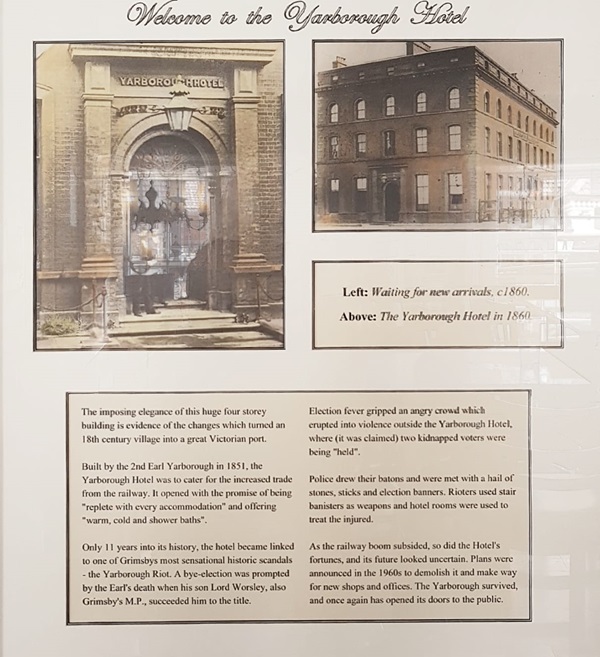
The text reads: The imposing elegance of this huge four storey building is evidence of the changes which turned an 18th century village into a great Victorian port.
Built by the 2nd earl of Yarborough in 1851, the Yarborough Hotel was to cater for the increased trade from the railway. It opened with the promise of being “replete with every accommodation” and offering “warm, cold and shower baths.”
Only 11 years into its history, the hotel became linked to one of Grimsby’s most sensational historical sandals – the Yarbrough Riot. A bye-election was prompted by the Earl’s death when his son Lord Worsley, also Grimsby’s MP, succeeded him to the title.
Election fever gripped an angry crowd which erupted into violence outside the Yarborough Hotel, where (it was claimed) two kidnapped voters were being “held”.
Police drew their batons and were met with a hail of stones, sticks and election banners. Rioters used stair banisters as weapons and hotel rooms were used to treat the injured.
As the railway boom subsided, so did the hotel’s fortunes, and its future looked uncertain. Plans were announced in the 1960’s to demolish it and make way for new shops and offices. The yarborough survived and once again has opened its doors to the public.
Left: Waiting for new arrivals, c1860
Above: The Yarborough Hotel, 1860.
A Grimsby, Cleethorpes & District Civic Society plaque.
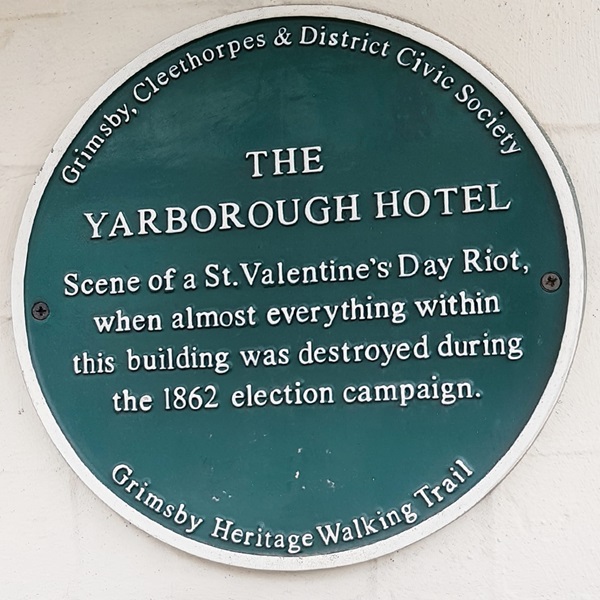
Scene of a St. Valentine’s Day Riot, when almost everything within this building was destroyed during the 1862 election campaign.
An illustration and text about John Whitgift.
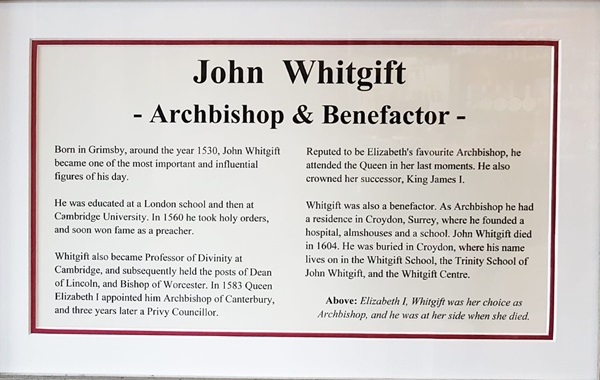
The text reads: Born in Grimsby, around the year 1530, John Whitgift became one of the most important and influential figures of his day.
He was educated at a London school and then at Cambridge University. In 1560 he took holy orders, and soon won fame as a preacher.
Whitgift also became professor of divinity at Cambridge, and subsequently held the posts of dean of Lincoln, and bishop of Worcester. In 1583 Queen Elizabeth I appointed him Archbishop of Canterbury, and three years later a privy councillor.
Reputed to be Elizabeth’s favourite Archbishop, he attended the Queen in her last moments. He also crowned her successor, King James I.
Whitgift was also a benefactor. As Archbishop he had a residence in Croydon, Surrey, where he founded a hospital, almshouses and a school. John Whitgift died in 1604. He was buried in Croydon, where his name lives on in the Whitgift School, the Trinity School of John Whitgift, and the Whitgift Centre.
Above: Elizabeth I, Whitgift was her choice as Archbishop, and he was at her side when she died.
Text about local fishing grounds.
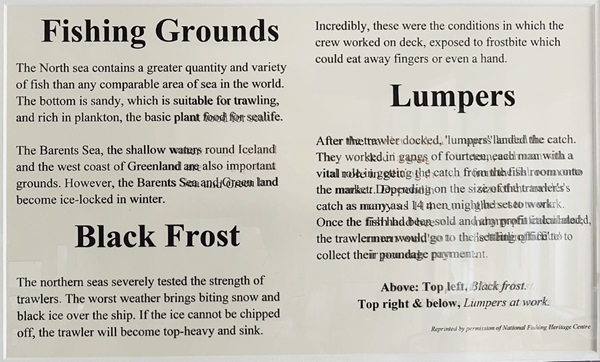
The text reads: The North Sea contains a greater quantity and variety of fish than any comparable area of sea in the world. The bottom is sandy, which is suitable for trawling, and rich in plankton, the basic plant food for sealife.
The Barents Sea, the shallow waters round Iceland and the west coast of Greenland are also important grounds. However, the Barents Sea and Green land become ice-locked in winter.
The northern seas severely tested the strength of trawlers. The worst weather brings biting snow and black ice over the ship. If the ice cannot be chipped off, the trawler will become top-heavy and sink.
Incredibly, these were the conditions in which the crew worked on deck, exposed to frostbite which could eat away fingers or even a hand.
Above: top left: Black Frost
Top right and below: Lumpers at work.
A photograph of Victoria Street, Grimsby, c1908.
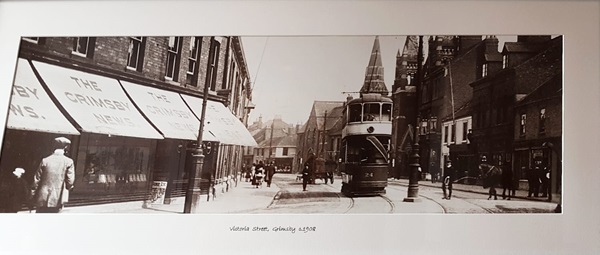
An old photograph of Grimsby.
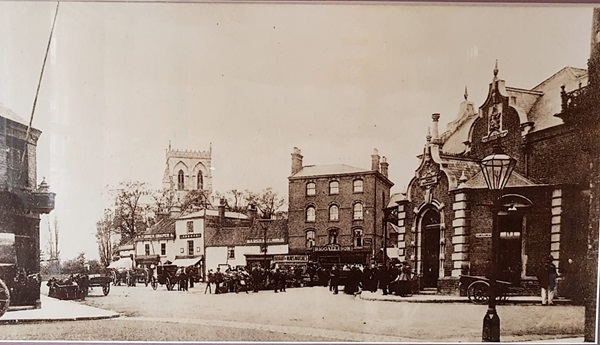
Original features of the hotel can still be seen today.
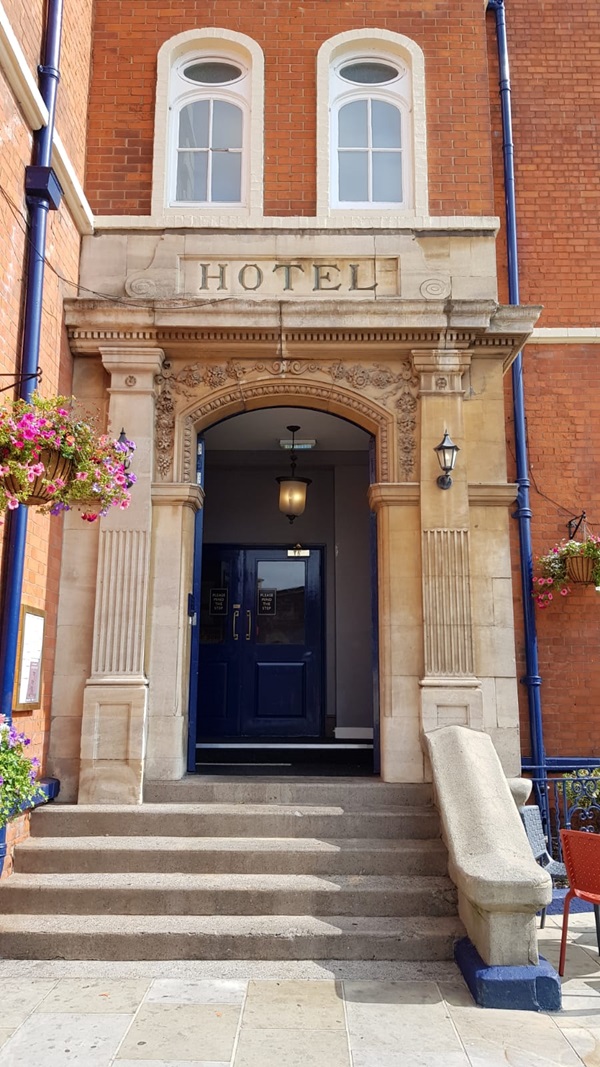
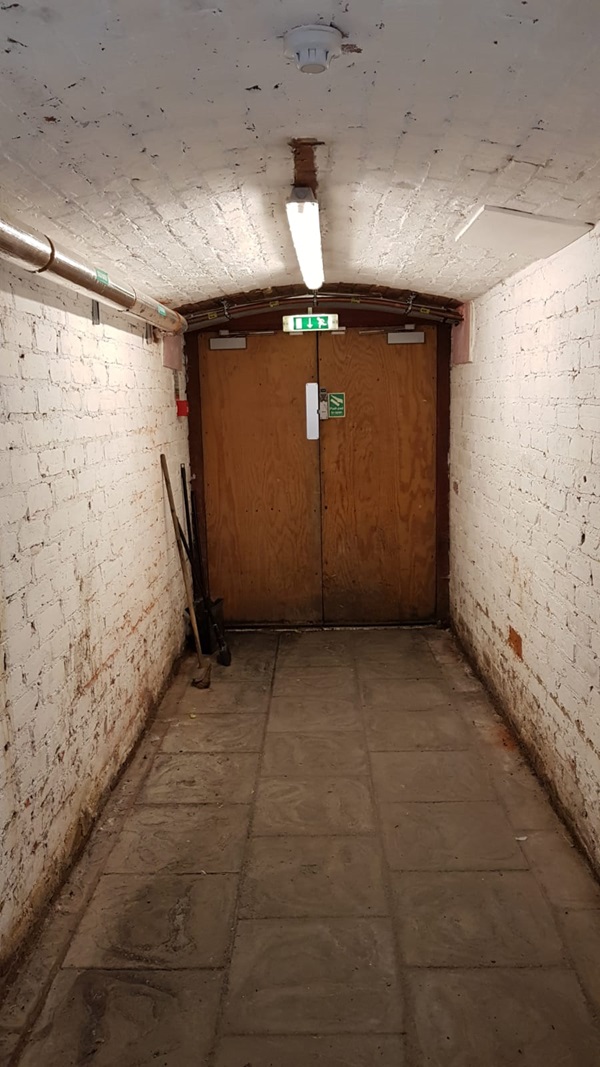
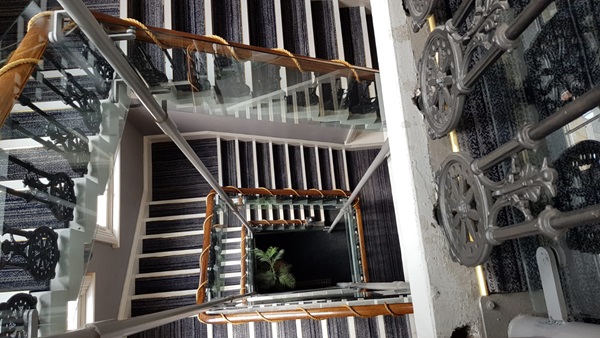
External photograph of the building – main entrance.
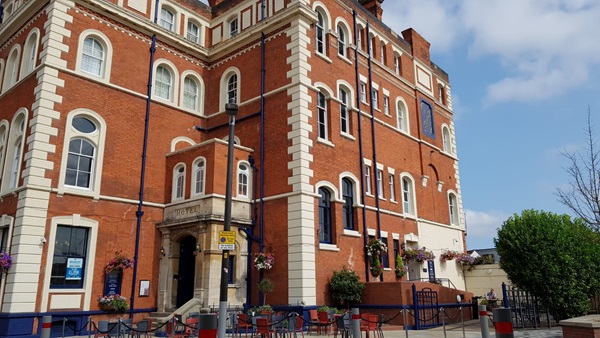
If you have information on the history of this pub, then we’d like you to share it with us. Please e-mail all information to: pubhistories@jdwetherspoon.co.uk